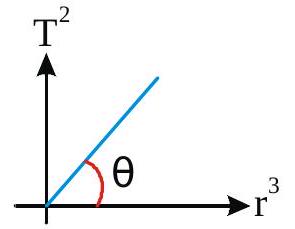270625 Two satellites \(S_{1}\) and \(S_{2}\) are revolving round a planet in coplanar and concentric circular orbits of radii \(R_{1}\) and \(R_{2}\) in the same direction respectively. Their respective periods of revolution are \(1 \mathrm{hr}\) and \(8 \mathrm{hr}\). The radius of the orbit of satellite \(S_{1}\) is equal to \(10^{4} \mathbf{~ k m}\). Their relative speed when they are closest, in \(\mathrm{kmph}\) is :
270625 Two satellites \(S_{1}\) and \(S_{2}\) are revolving round a planet in coplanar and concentric circular orbits of radii \(R_{1}\) and \(R_{2}\) in the same direction respectively. Their respective periods of revolution are \(1 \mathrm{hr}\) and \(8 \mathrm{hr}\). The radius of the orbit of satellite \(S_{1}\) is equal to \(10^{4} \mathbf{~ k m}\). Their relative speed when they are closest, in \(\mathrm{kmph}\) is :
270625 Two satellites \(S_{1}\) and \(S_{2}\) are revolving round a planet in coplanar and concentric circular orbits of radii \(R_{1}\) and \(R_{2}\) in the same direction respectively. Their respective periods of revolution are \(1 \mathrm{hr}\) and \(8 \mathrm{hr}\). The radius of the orbit of satellite \(S_{1}\) is equal to \(10^{4} \mathbf{~ k m}\). Their relative speed when they are closest, in \(\mathrm{kmph}\) is :
